Ladies* in Wading: Our Annual Aravaipa Trek
May 4-6, 2007
*And Gents
Photos by David, Kathy, Dennis and Marion
Flood damage to roads, bridges and restrooms in Sabino Canyon has been heavily publicized and is currently the object of a campaign to "save" the canyon (presumably by repairing the man-made structures). In the kafuffle over Tucson's most popular urban park, we may overlook other areas that suffered far greater consequences from the torrential rains of July, 2006.
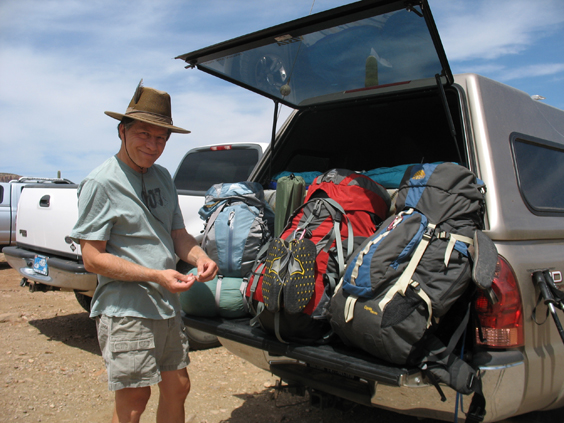
We got a good look at some serious flood damage during our annual trek to Aravaipa Canyon in the Galiuro Mountains. The canyon reopened in March, 2007, after being closed for more than seven months. I called Kathy the minute permits became available, and she flew all the way from Seattle for her second backpacking trip.
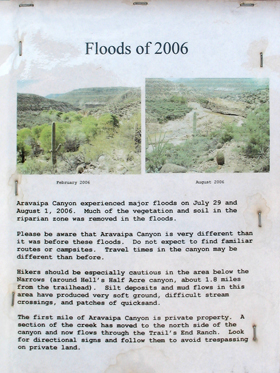
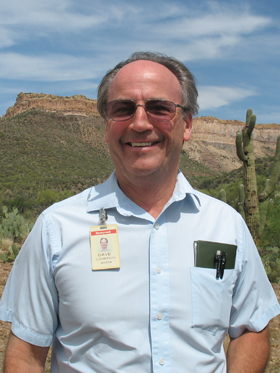
A sign at the trailhead cautions hikers to "be aware that Aravaipa Canyon is very different than it was before the floods. Do not expect to find familiar routes or campsites." Visitors are further warned of "mud flows, silt deposits and patches of quicksand."
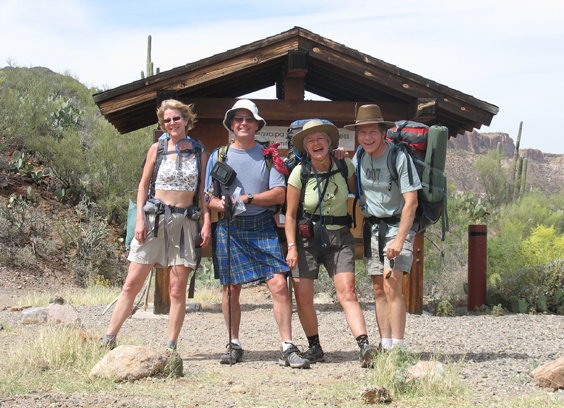 David arrived straight from work, disguised as a mild-mannered engineer (complete with pocket protector). But after a quick change he'll be "Dippin' Dave" in a tartan and a Tilley.
David arrived straight from work, disguised as a mild-mannered engineer (complete with pocket protector). But after a quick change he'll be "Dippin' Dave" in a tartan and a Tilley.
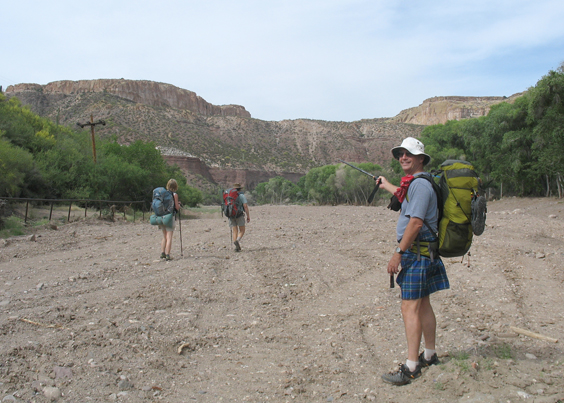
Extensive, uh, renovations in the canyon were immediately apparent. The former tree-lined creek is now a wide gravel bed, shorn of vegetation. The photo below shows an area where the river carved a completely new route through the forest. The former trail is a good 50 yards to the right.
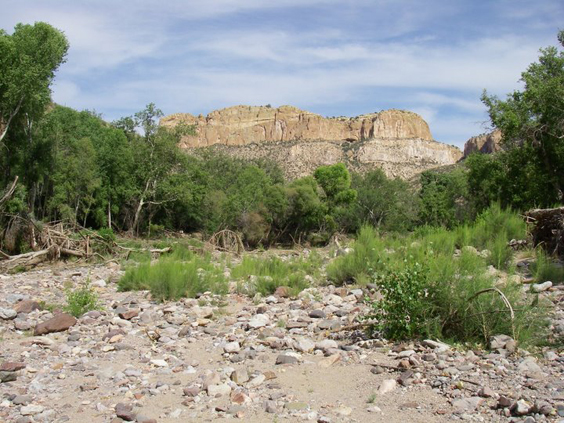
Where a narrow footpath once wandered under a thick canopy of cottonwoods, now there's a sea of rubble.
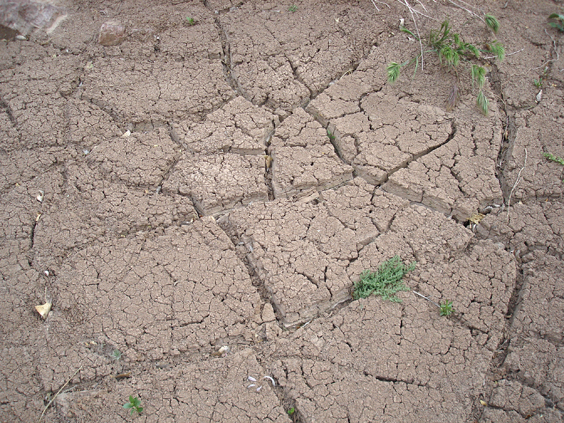
A mud flat has replaced one of our favorite swimming holes, and another has been cordoned off after a hiker sank to his knees in quicksand!
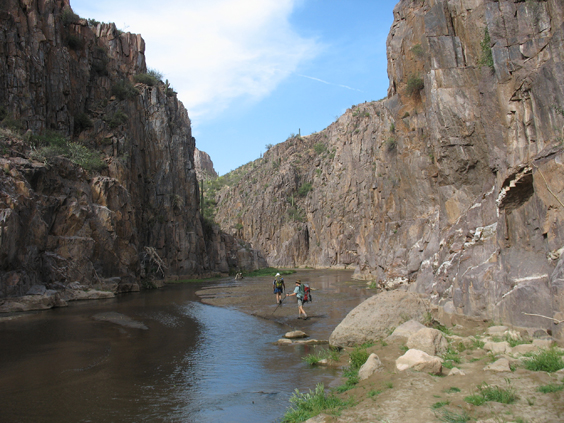
Three years ago on this spot we hoisted our packs overhead in chest-deep water.
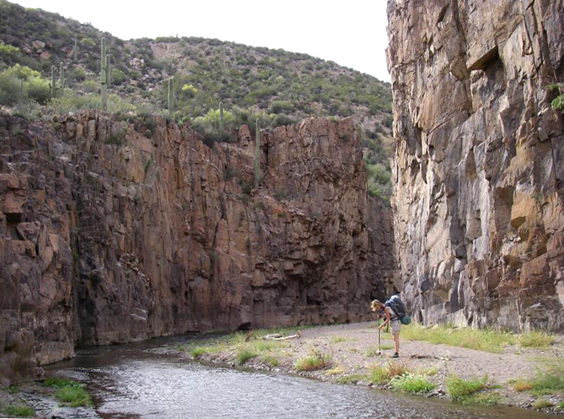 On the plus side, the canyon is now wide open with bigger views than we'd ever seen before.
On the plus side, the canyon is now wide open with bigger views than we'd ever seen before.
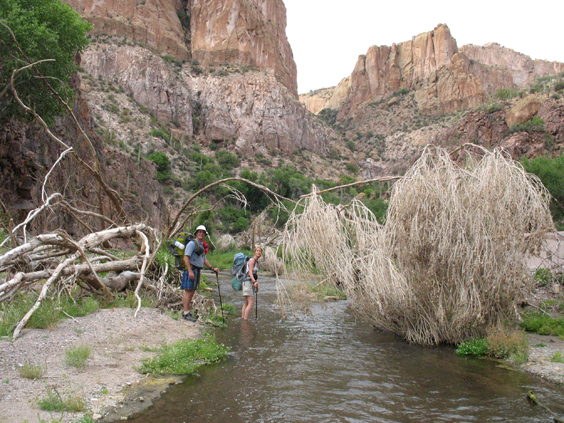
Downed trees are stacked up like giant matchsticks.
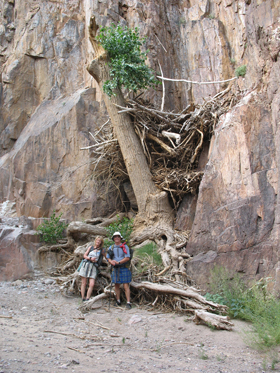
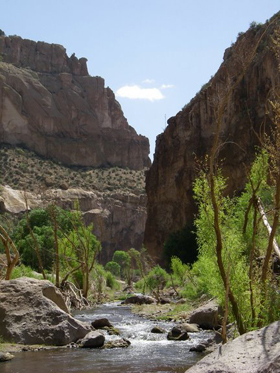
Piles of debris testify to the impossible depth of the river during the flood.
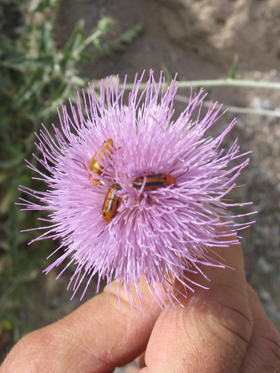
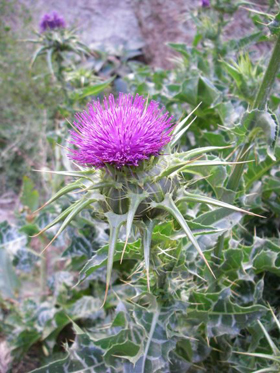
And we weren't too late for spring wildflowers: huge purple thistles, desert lupine, Mexican poppies, Indian paintbrush, desert verbena, chia and monkey flowers to name a few.
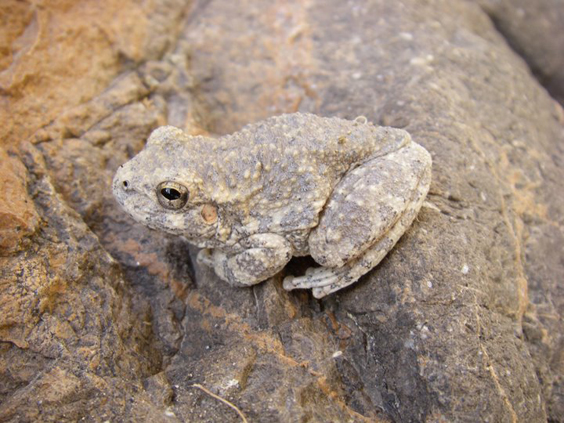
This handsome fellow is probably a canyon treefrog.

Perfectly disguised as a lump of granite, he can leap like a grasshopper if the need arises.
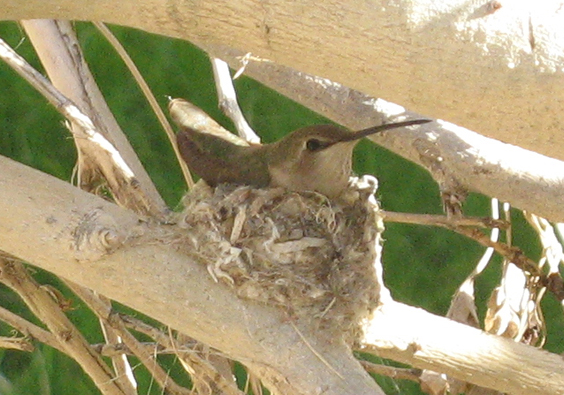
But the best wildlife sighting on this trip was a hummingbird the size of a peanut, sitting on thimble-sized nest containing two white jelly beans.
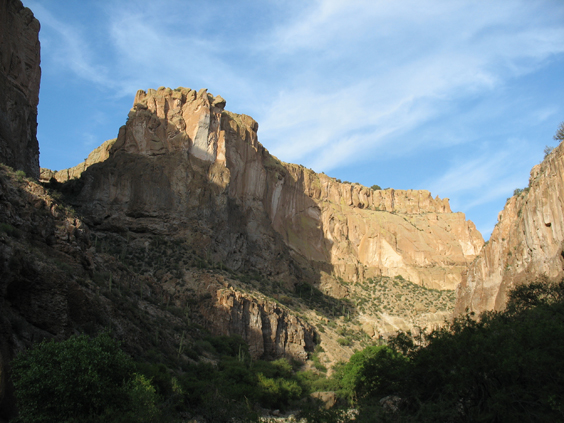
We camped on a sandy bench high above the creek, with a commanding view of the canyon.
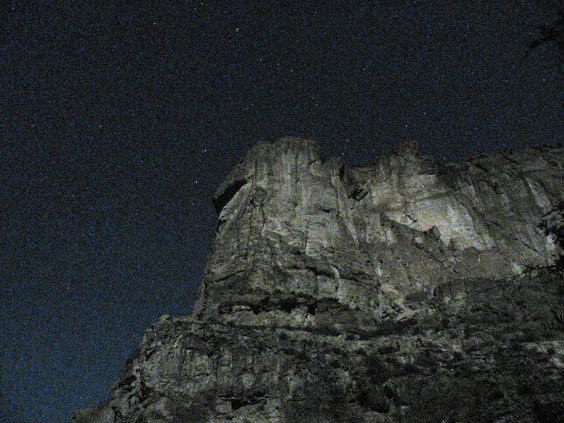
A wild dust storm made for a restless night, but after midnight, the dust settled and a full moon lit up the opposite wall of the canyon.
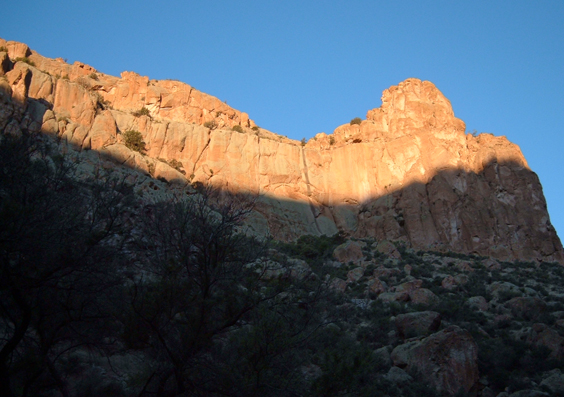
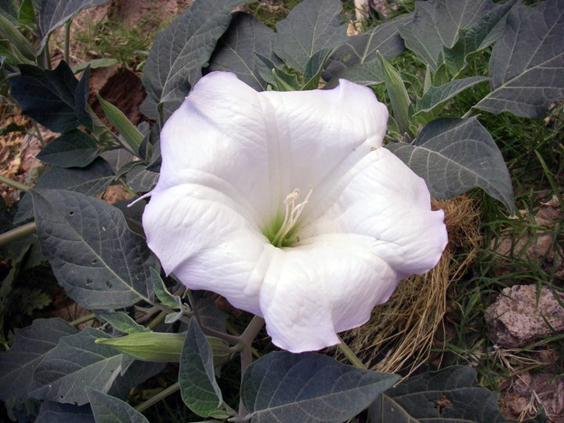
The datura fold their delicate pillowcases until evening returns.
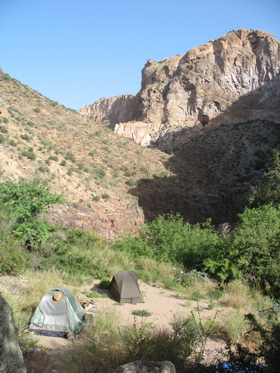
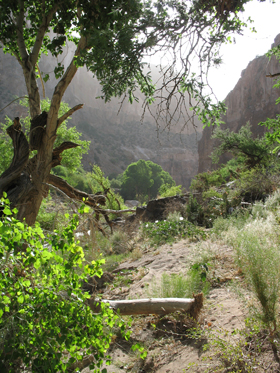
The morning sun creeps down the canyon wall.
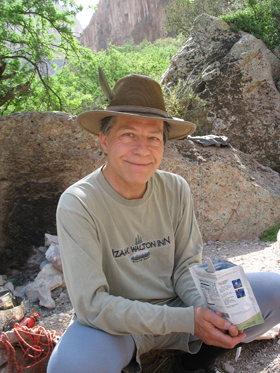
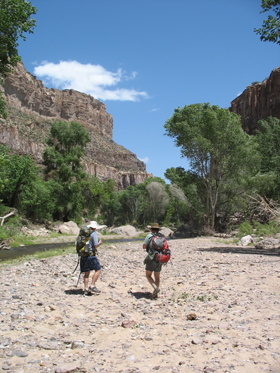
Our magnificent campsite on Aravaipa Creek. A little granola, a cup of coffee and we're on our way.
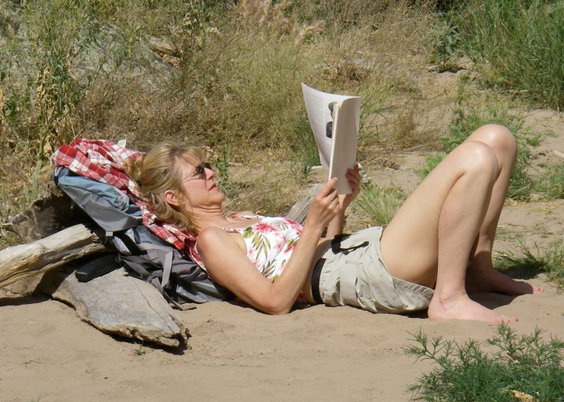
Kathy will spend the day relaxing in camp, while David, Dennis and I continue as far as Booger Canyon.
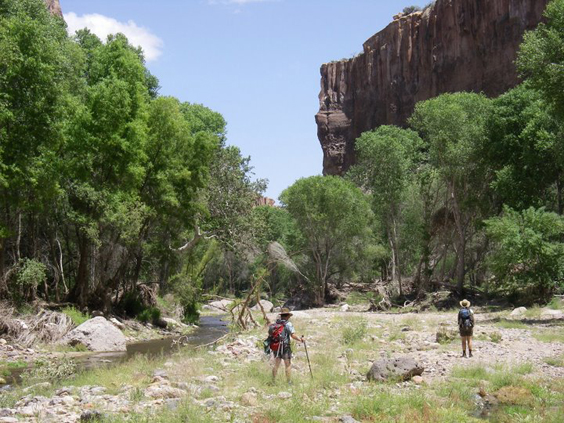
Previously obscured by dense forest, we now have unobstructed views in all directions.
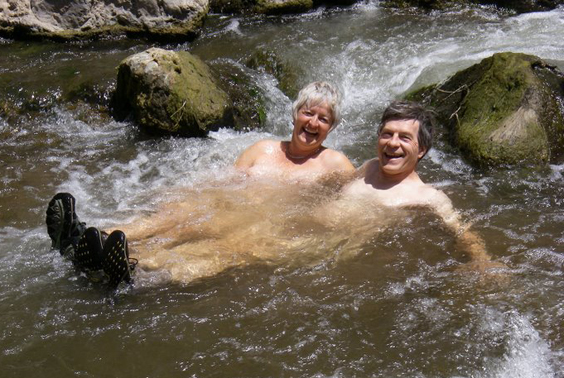
As we progressed upstream, the damage was less obvious. There were many new campsites ... and a few beaudacious swimming holes!
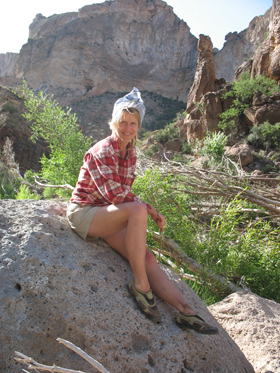
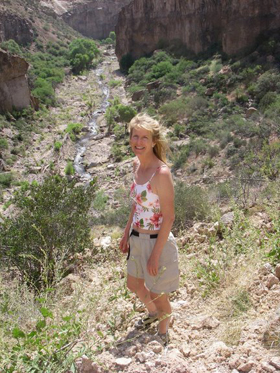
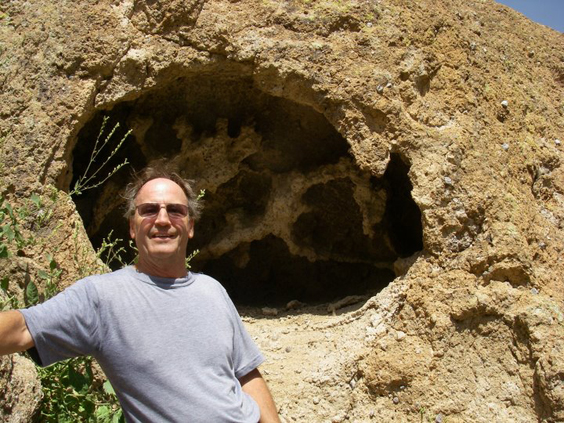
David and Kathy explore a mysterious hollowed rock above our base camp.
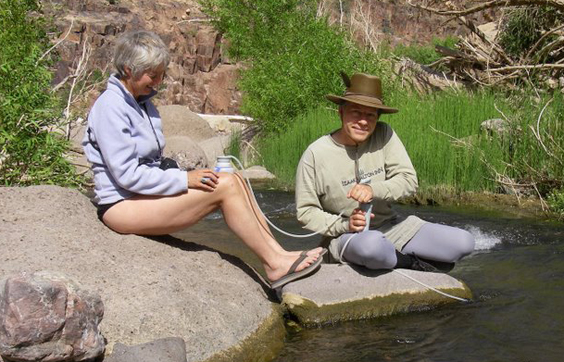
Another water run. Heavy silt eventually clogged both pumps.
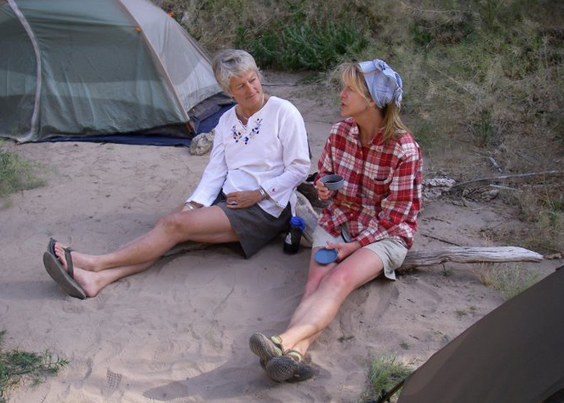
Any port in a dust storm!
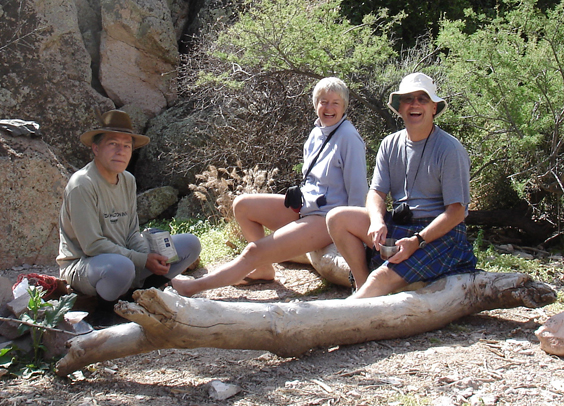
An early start on Sunday morning.
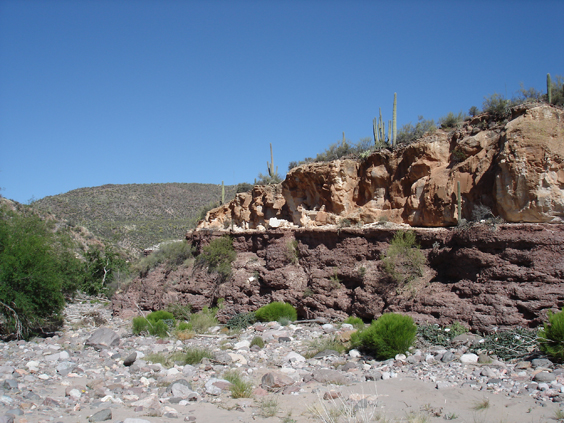
Three-layer cake of red rhyolite, volcanic tuff and bone-white caliche.
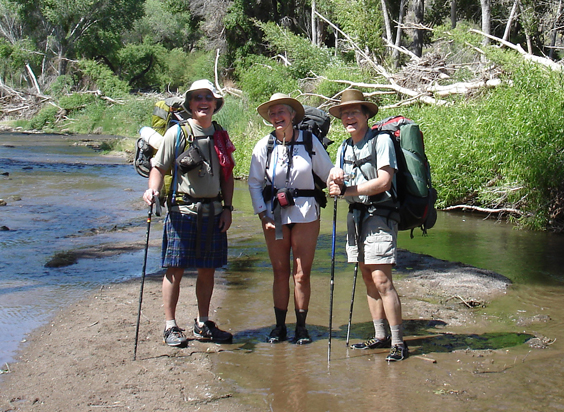
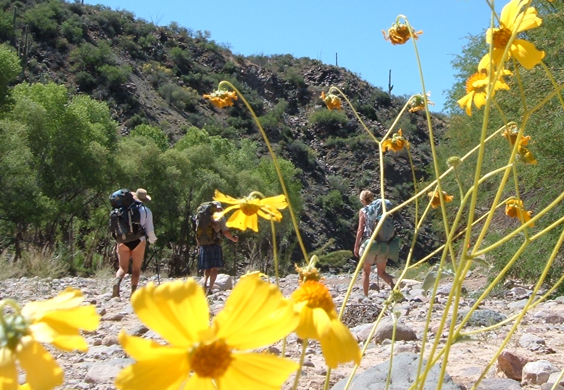
I have to be out of the canyon, patched up and ready to sing with Mzekala at 2:30 at the Tucson Folk Festival.
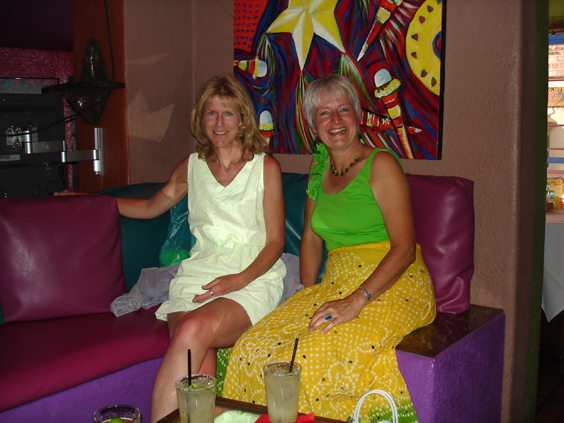
Celebrating a successful hike at El Charro. We sent Kathy back to Seattle with all the sunshine she could hold!
